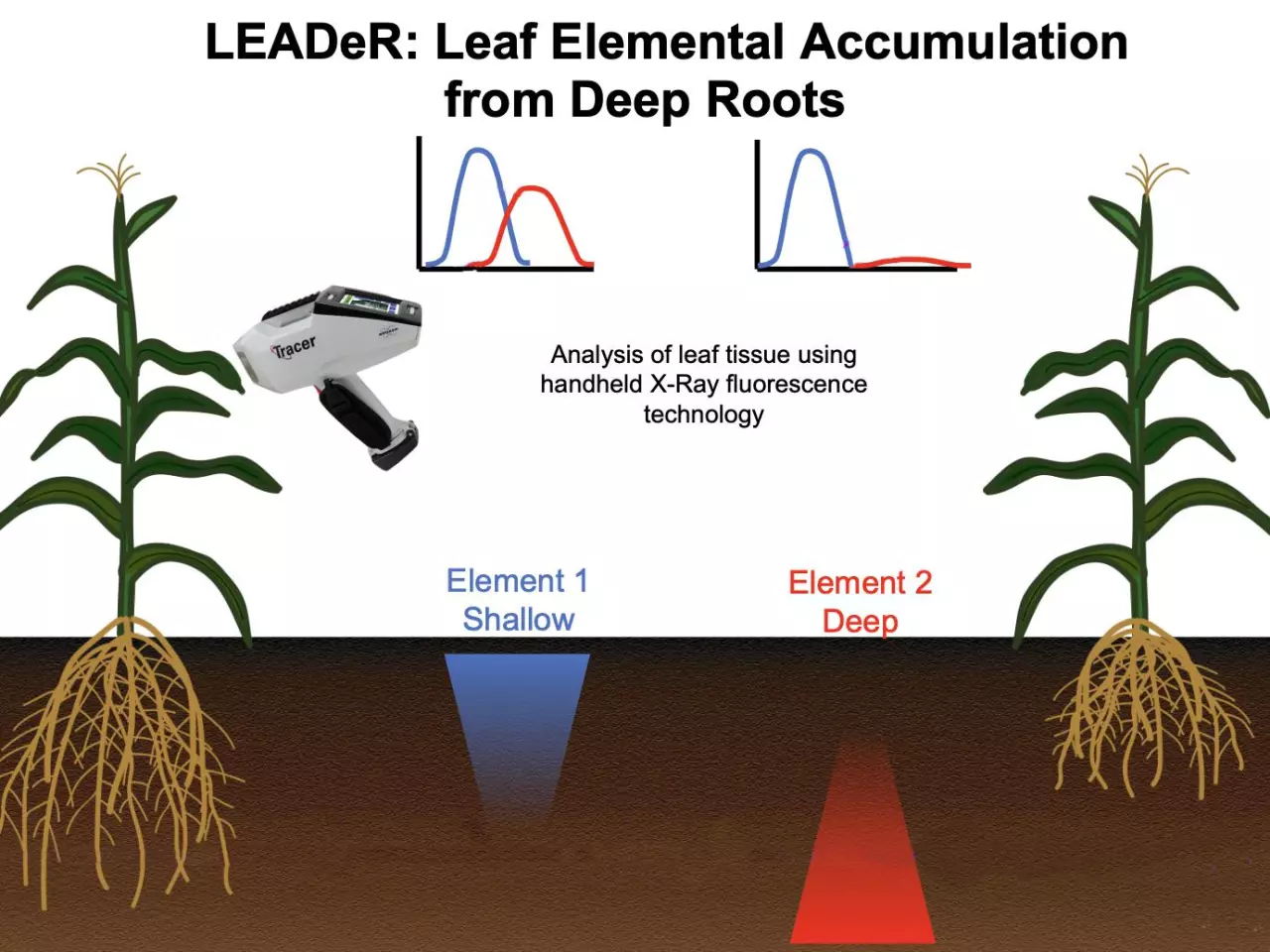A new technique may make it easier to selectively breed crop plants for better, deeper roots. The non-destructive process involves quickly checking a plant's leaves to see how far down its roots go into the soil.
Plants with deep roots are more drought-tolerant than their shallow-rooted counterparts, as their long roots are able to access underground water tables that short roots can't reach. They're also superior at taking up nutrients such as nitrogen, which tend to be carried deep into the soil with rain or irrigation water.
As an added greenhouse-gas-mitigating benefit, the deeper a plant's roots go, the longer that the atmospheric carbon dioxide captured by that plant stays locked in the soil. This is because CO2 is taken in by the leaves and carried down to the roots.
For these reasons and others, crop scientists are constantly trying to develop new varieties of crop plants with deeper roots.
Currently, the standard method of checking root length involves digging up multiple plants in a test plot, then measuring their roots with a tape measure. Not only is this process time- and labor-intensive, it also doesn't allow those particular plants' roots to be measured again later in the study, as they don't get replanted.
That's where LEADER comes in. Its name an acronym for "Leaf Element Accumulation from DEep Root," the root-measurement method was created by Prof. Jonathan Lynch and colleagues at Pennsylvania State University.
The technology is based on the fact that within any given farm field, different minerals and other elements are found at different depths in the soil. As a plant's roots grow down into that soil, they take in those elements, which are carried up into the leaves.
Therefore, by seeing which soil elements are present in the leaves, it's possible to tell how far down the roots have grown so far. Of course, you do first need to know which elements are located at which depths, which can be determined by taking and analyzing an initial soil core sample of the field in question.

For the study, Lynch's team grew 30 genetically distinct lines of corn at four sites across the US, testing both the soil and the leaves at those locations over the course of six years. The leaf analysis was performed onsite, using a handheld X-ray fluorescence device. When it came to plants with roots measuring about 30 cm (1 foot) or longer, LEADER was found to be as accurate as traditional root-measurement techniques.
Because naturally occurring elements may not always produce a strong, clear signal, a very detectable "tracer element" such as strontium can be banded into the soil at a known depth before the crops are planted. Once the strontium starts showing up in the leaves, then crop scientists will know that the roots have reached that depth.
And importantly, while corn was used in the study, LEADER should work on plants of all types.
"To breed deeper-rooted crops, you need to look at thousands of plants. Digging them up is expensive and time-consuming because some of those roots are down two meters or more," said Lynch. "Everybody wants deep-rooted crops – but until now, we didn’t know how to get them."
A paper on the research was recently published in the journal Crop Science.
Source: Penn State





